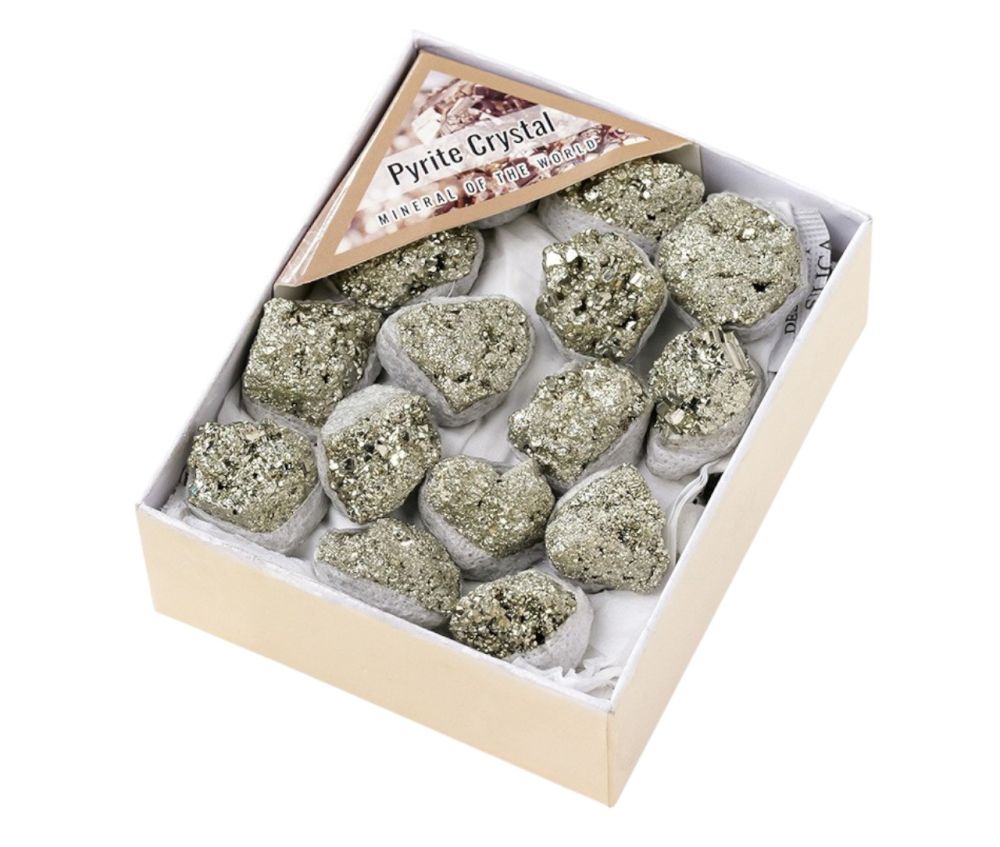We use cookies to make your experience better.
TimmersGems has a new website, existing customers also need to register again.
Assortment box of pyrite clusters (15 pieces) For on the counter.
Beautifully sorted assortment in a stunning display box that looks magnificent on the counter. Especially eye-catching for children who always look at the minerals from our nature with wonder.
Availability:
In stock
SKU
121963
Pyrite or iron pyrite is a mineral with the formula FeS₂ (chemical name: iron disulfide). The mineral is an important iron and sulfur ore. It often forms well-shaped (euhedral) crystals in the shape of a cube with characteristic striations and a gold-like luster. It is also called fool's gold (from the English fool's gold) because it is sometimes mistaken for gold. The name cat gold is sometimes also incorrectly used; however, this refers to yellow mica or resin. Because pyrite is abundant, it can create the illusion of great wealth. However, pyrite is not very valuable (although it can be sold). It is found together with other sulfur-containing minerals, but also with oxides, in quartz veins, in sedimentary rocks in coal beds, and as a replacement mineral in fossils. Pyrite is a disulfide with sulfide pairs (S2)2- and Fe2+ ions in an octahedral environment in a t2g6 low-spin state. As a result of both ions having a closed configuration, it is a diamagnetic semiconductor. During the weathering of pyrite, iron(hydr)oxides are formed, and sulfuric acid is also released. This acid can then react with other minerals and can thus lead to the formation of, for example, gypsum, alunite, and jarosite. An important site for finding pyrite is the island of Elba. The name pyrite is very old, derived from the ancient Indo-European word pyr (fire, cf. for example pyrotechnics for the art of fireworks, or the English pyre (funeral pyre), because one could create sparks by striking pyrite against flint or iron. Nowadays, we understand flint to mean something very different (a specific form of SiO₂). Other names one might encounter for pyrite are ferrosulfide, iron sulfide, and the less common terms iron glance and iron pyrite. Pyrite was once sold as fake gold because it has a gold-like luster. However, the luster changes when the luster surface tilts; with gold, the gold luster remains the same. Pyrite is also angular, with sharp edges and hard, while gold is round and soft.
| Dimensions | One Size |
|---|---|
| Country of Manufacture | China |












